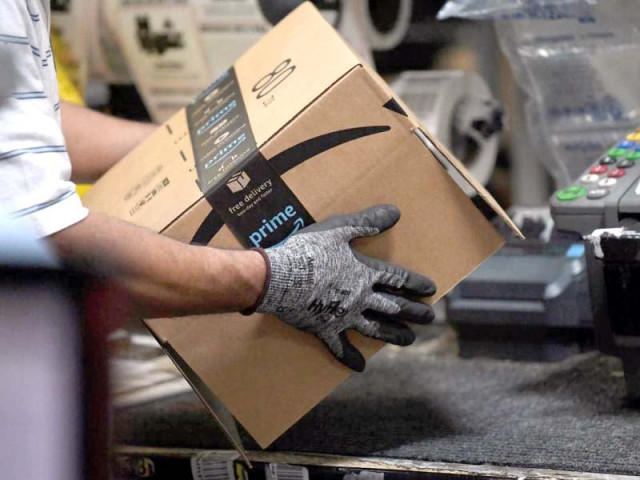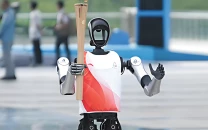Amazon rolls out machines that pack orders and replace jobs
It will lead to more than 1,300 job cuts across 55 US fulfilment centres

Amazon employs countless workers at each fulfillment centre who do variations of this same task. PHOTO: REUTERS
Amazon has considered installing two machines at dozens more warehouses, removing at least 24 roles at each one, these people said. These facilities typically employ more than 2,000 people. That would amount to more than 1,300 cuts across 55 US fulfilment centres for standard-sized inventory.
Amazon would expect to recover the costs in two years, at $1 million per machine plus operational expenses, they said. The plan, previously unreported, shows how Amazon is pushing to reduce labour and boost profits as automation of the most common warehouse task - picking up an item - is still beyond its reach.
The changes are not finalised because vetting technology before a major deployment can take a long time. Amazon is famous for its drive to automate as many parts of its business as possible, whether pricing goods or transporting items in its warehouses. But the company is in a precarious position as it considers replacing jobs that have won it subsidies and public goodwill.
“We are piloting this new technology with the goal of increasing safety, speeding up delivery times and adding efficiency across our network,” an Amazon spokeswoman said in a statement. “We expect the efficiency savings will be re-invested in new services for customers, where new jobs will continue to be created.”
Amazon last month downplayed its automation efforts to press visiting its Baltimore fulfilment centre, saying a fully robotic future was far off. Its employee base has grown to become one of the largest in the United States, as the company opened new warehouses and raised wages to attract staff in a tight labour market.
A key to its goal of a leaner workforce is attrition, one of the sources said. Rather than lay off workers, the person said, the world’s largest online retailer will one day refrain from refilling packing roles. Those have high turnover because boxing multiple orders per minute over 10 hours is taxing work. At the same time, employees that stay with the company can be trained to take up more technical roles.
The new machines, known as the CartonWrap from Italian firm CMC Srl, pack much faster than humans. They crank out 600 to 700 boxes per hour, or four to five times the rate of a human packer, the sources said. The machines require one person to load customer orders, another to stock cardboard and glue and a technician to fix jams on occasion. CMC declined to comment.
Though Amazon has announced it intends to speed up shipping across its Prime loyalty programme, this latest round of automation is not focused on speed. “It’s truly about efficiency and savings,” one of the people said. Including other machines known as the “SmartPac,” which the company rolled out recently to mail items in patented envelopes, Amazon’s technology suite will be able to automate a majority of its human packers. Five rows of workers at a facility can turn into two, supplemented by two CMC machines and one SmartPac, the person said.
The company describes this as an effort to “re-purpose” workers, the person said. It could not be learned where roles might disappear first and what incentives, if any, are tied to those specific jobs. But the hiring deals that Amazon has with governments are often generous. For the 1,500 jobs Amazon announced last year in Alabama, for instance, the state promised the company $48.7 million over 10 years, its department of commerce said.
Picking challenge
Amazon is not alone in testing CMC’s packing technology. JD.com Inc and Shutterfly Inc have used the machines as well, the companies said, as has Walmart Inc, according to a person familiar with its pilot. Walmart started 3.5 years ago and has since installed the machines in several US locations, the person said. The company declined to comment.
Interest in boxing technology sheds light on how the e-commerce behemoths are approaching one of the major problems in the logistics industry today: finding a robotic hand that can grasp diverse items without breaking them.
Amazon employs countless workers at each fulfillment center who do variations of this same task. Some stow inventory, while others pick customer orders and still others grab those orders, placing them in the right size box and taping them up. Many venture-backed companies and university researchers are racing to automate this work.
Published in The Express Tribune, May 14th, 2019.
Like Business on Facebook, follow @TribuneBiz on Twitter to stay informed and join in the conversation.


















COMMENTS
Comments are moderated and generally will be posted if they are on-topic and not abusive.
For more information, please see our Comments FAQ